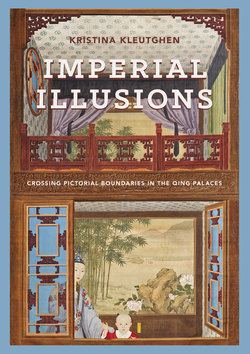Читать книгу Imperial Illusions - Kristina Kleutghen - Страница 61
На сайте Литреса книга снята с продажи.
Оглавлениеprivate secretary to Lord George Macartney (1737–1806) and part of the failed British embassy to the Qianlong court in 1792–94, also noted this characteristic Chinese response to shading on faces. One Qing court minister, upon seeing a portrait of King George III (r. 1760–1820), commented that “ ‘it was a great pity it should have been spoiled by the dirt upon the face,’ pointing, at the same time, to the broad shade of the nose.”86 Even at the end of the eighteenth century, after more than two centuries of European artistic presence in China, this perception of shaded faces as dirty had not changed. Why Kangxi allowed such visible facial modeling through shading remains a mystery, but given the survival of this first imperial portrait executed with European pictorial techniques, he must have approved of it and painting’s sense of authoritative gravitas.87
The resulting seemingly realistic facial features of this life-size portrait might suggest that it was painted from life and therefore is a true representation of the emperor. However, the Jesuit Louis-Daniel le Comte’s (1655–1728) description of Kangxi suggests that the painter took some artistic license:
He was something above the middle stature, more corpulent than what in Europe was reckon’d handsome; yet somewhat more slender than a Chinese wished to be; full visaged, disfigured with the small pox, had a broad forehead, little eyes, and a small nose after the Chinese fashions; his mouth was well made, and the lower part of his face very agreeable. In fine, tho’ he bears no great majesty in his looks yet they show abundance of good nature; his ways and actions have something of the prince in them, and show him to be such.88
Notably missing from this portrait—indeed, from all of Kangxi’s portraits—are the disfiguring smallpox scars, visual evidence that he had survived this disease to which the Manchus were particularly susceptible, and therefore a clear demonstration of the divine approval he enjoyed. Although this detail was omitted, the highly constructed composition of the portrait confirms the artificiality of the image and the careful representation of imperial ideology. The portrait has reduced the emperor and his environment to their fundamental geometric shapes of triangles, circles, and squares. The emperor’s conical hat marks the apex of his triangular seated position, its base broadened by the spread of his robes around his crossed legs; the books and shelves are rigidly rectilinear and perfectly ordered; and the line created by the spherical hat pearl and metal buttons bisects the painting precisely in half. Only subtle differences in the heights of the stacks of books and the positions of the emperor’s hands disturb the otherwise perfect symmetry of the work. This highly geometric and symmetrical composition therefore draws attention to the central vanishing point of the painting.
Despite the importance of the face in Chinese portraiture, and particularly in imperial portraiture, the vanishing point of this painting lies not on the emperor’s improbably smooth-skinned face but on the open book in front of him, toward which Kangxi seems to reach with his left hand as if about to turn the page. The architectural manifestations
